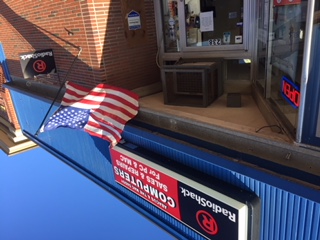

In 1847 William Siemens, then an officer in the army of Prussia, laid the first successful underwater cable using gutta percha insulation, across the Rhine between Deutz and Cologne. Michael Faraday and Wheatstone soon discovered the merits of gutta-percha as an insulator, and in 1845, the latter suggested that it should be employed to cover the wire which was proposed to be laid from Dover to Calais. : 26–27 Twenty years earlier, Montgomerie had seen whips made of gutta-percha in Singapore, and he believed that it would be useful in the fabrication of surgical apparatus. Gutta-percha, the adhesive juice of the Palaquium gutta tree, was introduced to Europe by William Montgomerie, a Scottish surgeon in the service of the British East India Company. India rubber had been tried by Moritz von Jacobi, the Prussian electrical engineer, as far back as the early 19th century.Īnother insulating gum which could be melted by heat and readily applied to wire made its appearance in 1842. A good insulator to cover the wire and prevent the electric current from leaking into the water was necessary for the success of a long submarine line. The following autumn, Wheatstone performed a similar experiment in Swansea Bay. Samuel Morse proclaimed his faith in it as early as 1840, and in 1842, he submerged a wire, insulated with tarred hemp and India rubber, in the water of New York Harbor, and telegraphed through it.

Early history: telegraph and coaxial cables First successful trials Īfter William Cooke and Charles Wheatstone had introduced their working telegraph in 1839, the idea of a submarine line across the Atlantic Ocean began to be thought of as a possible triumph of the future. Modern cables are typically about 25 mm (1 in) in diameter and weigh around 1.4 tonnes per kilometre (2.5 short tons per mile 2.2 long tons per mile) for the deep-sea sections which comprise the majority of the run, although larger and heavier cables are used for shallow-water sections near shore. These early cables used copper wires in their cores, but modern cables use optical fibre technology to carry digital data, which includes telephone, Internet and private data traffic. Subsequent generations of cables carried telephone traffic, then data communications traffic. Submarine cables first connected all the world's continents (except Antarctica) when Java was connected to Darwin, Northern Territory, Australia, in 1871 in anticipation of the completion of the Australian Overland Telegraph Line in 1872 connecting to Adelaide, South Australia and thence to the rest of Australia. The first submarine communications cables laid beginning in the 1850s carried telegraphy traffic, establishing the first instant telecommunications links between continents, such as the first transatlantic telegraph cable which became operational on 16 August 1858. Save resulting image by pressing Save button.Submarine cables are laid using special cable layer ships, such as the modern René Descartes, operated by Orange Marine.Ī submarine communications cable is a cable laid on the sea bed between land-based stations to carry telecommunication signals across stretches of ocean and sea. Use Reset button to reset settings to defaults. Use Zoom and Rotate sliders to adjust size and rotation angle of a resulting image, and Twist slider to give it some spin. Resulting image will look more seamless if the right and left edges of your photos match, but if they don't, you can try to improve matters with Mirror switch. With Tunnel switch you can bend your photo around in a concave way, for the opposite effect. After choosing original photo, a default planet image will be generated. Landscape photos are preferable and panoramic shots are even better. Press Open button to select photo from image library on your phone or take a new one. In only a few seconds you can convert any photo into a tiny planet masterpiece and experiment with different levels just by adjusting sliders.

TinyPlanet lets you to transform your landscape or panoramic photo into a sphere so that it looks like a tiny planet.


 0 kommentar(er)
0 kommentar(er)
